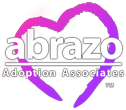One of the most competitive challenges in this country these days is the American adoption race. Want to understand why adopting has become such a marathon? We got you… a short adoption history lesson may be helpful.
The First Lap of the American Adoption Race
A little more than a century ago, adoption was borne of necessity, due largely to a national lack of birth control access and an immigration problem (sound familiar, Texans?) Orphanages, baby farms and foundling homes (aka the original alternative to safe haven baby dumping) enabled “fallen women” and impoverished families to abandon their young. The American adoption race began with thousands of unwanted urchins being shipped across the USA on “orphan trains.” Kids presumed to be orphans were bid on by those who wanted them or needed farm help. Problems necessitated the creation of the homestudy, in response to concerns for the children who got mistreated. Sealed adoption records began to be issued by the courts in 1917, to protect the adoptees from social prejudice. (It also prevented adoptees from being found by their original parents, unfortunately.)
Lap Two: Agencies, Maternity Homes & The Baby Scoop
After awhile, orphanages got phased out in favor of children’s homes and adoption agencies. There was a social stigma attached to being an adoptee, because of public prejudice against immigrants (yep) and a societal suspicion that surrendered kids were somehow “damaged goods” or genetically inferior. This led adoption workers to warn parents not to ever tell adopted kids they’d been adopted (which proved to be a huge mistake, but… yeah.)
In the fifties and sixties, pregnant teens and unwed moms were labeled “girls in trouble.” Many got quietly shipped off to maternity homes, to deliver in secret and have their babies “adopted out” without ever having any real choice in the matter. By the seventies, these mothers and the adoptees they’d lost began speaking out, and by the eighties, adoption attorneys had begun horning in on the “adoption biz” causing costs to go up. Birth control and abortion began to reduce the numbers of unwanted pregnancies, and the social stigma of being a single parent subsided, even as infertility rates in America began to rise.
Lap Three: The Adoption Race Goes Global (for Awhile)
As the numbers of babies being voluntarily placed for adoption dropped, Americans began adopting from overseas, raiding orphanages in Russia and Romania and China in search of closed adoptions (and kids that might look Caucasian, frankly.) The American adoption race also became more crowded as same sex couples also began vying for adoptable children in the US and overseas.
Transracial adoption became more popular, causing international adoption programs to start also targeting parentless children in underprivileged countries in Latin America, Vietnam and Africa. Due to reported concerns about child trafficking, however, international adoption programs began to come under stricter review. The Hague Treaty was initiated to address global ethical issues and system failures. The new American adoption race requirements led to the closure of multiple foreign adoption programs, which caused some collateral damage both for children left behind and for the adoption scene back in the USA.
Lap Four: Is the DIY Approach Adoption’s Final Run?
The American players began flooding the domestic adoption market, and the adoption race became overrun with sub-par players, skyrocketing adoption fees, and a patchwork quilt of differing state adoption laws. It’s now said that more than 100 hopeful adoptive families await every one infant placed for adoption in the USA. (Despite the fact that thousands of children who are no longer babies wait in state foster care programs, having already been legally “freed” to be adopted.)
The costs of infant adoption run $30-75k these days. The adoption of kids in state care are typically subsidized by taxpayers. (However, their age, their medical needs. their racial identity and/or the size of their sibling groups makes them somehow less wanted by the throngs of entrants in the American adoption race, sadly.)
Unlicensed adoption facilitators, adoption consultants and other “adoption advertisers” now vie to recruit paying customers across the nation. The competition to adopt healthy infants, whether domestically or internationally, even launched a program called Fund the Nations in which hopeful adopters compete with each other to sell the most t-shirts in order to win $30k to “cover” adoption costs. (Parents hoping to win enough to keep their babies need not apply, however. ) Big surrogacy programs are outpacing (and outpricing) most adoption programs, nowadays. Coupled with the falling birthrates, it seems unlikely adoption will ever produce enough healthy infants for all the people who want them.
How To (Really) Win the American Adoption Race
There’s no magic formula on how to win the American adoption race… sorry (not sorry.)
An excellent resource called Ethical Family Building was launched to help those in the midst of the adoption race to know how important ethical adoption is and where to pursue one.
Across the globe, the adoption race may entice even the nicest of would-be adopters or birthparents to take shortcuts, unfortunately.
Yet the American adoption race can ultimately only truly be “won” by adoptees whose adoptions were done properly, by parents who did things the “right way” to ensure their child/ren could grow up proud of their story and everyone who was a part of it.


